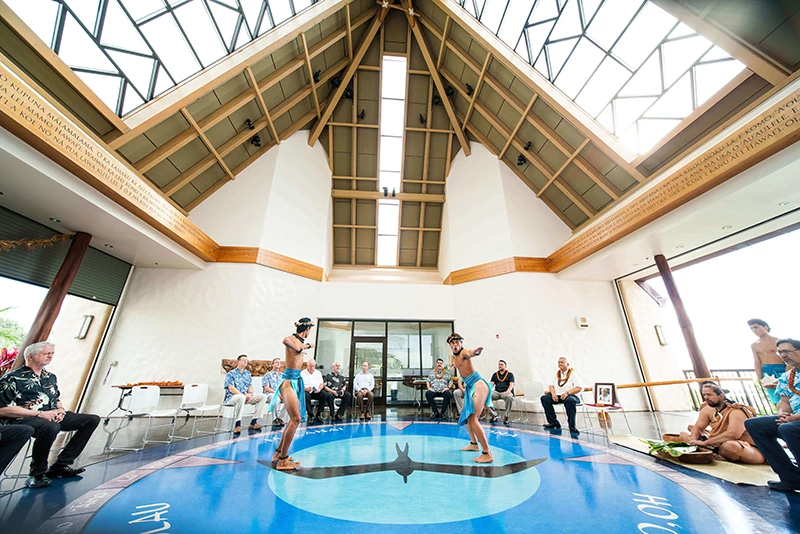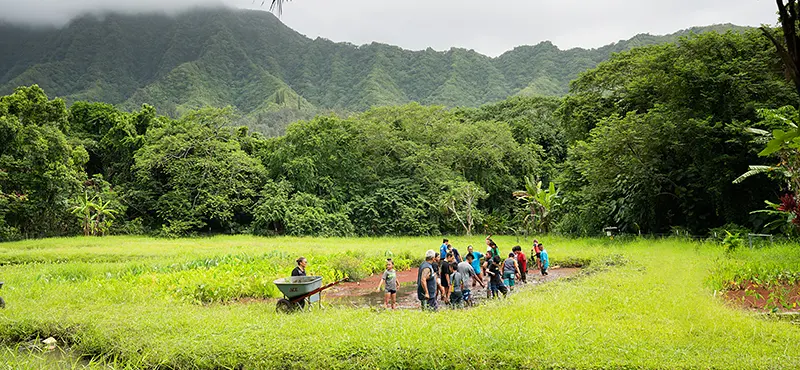As Hawaiʻi continues to grapple with the growing threat of wildfires, a new set of resources aims to shift the narrative from recovery to prevention, starting with our homes. That was the focus of a recent webinar hosted by Hawaiʻi Wildfire Management Organization, which unveiled key steps to help homeowners, developers and planners build with fire in mind.
Ke Kula ʻo Kamehameha supports wildfire preparedness through its partnership with the Hawaiʻi Wildfire Management Organization, sharing trusted tips rooted in our shared kuleana.
“Fire does not have to lead to disaster,” said HWMO Co-Director Nani Barretto. “We can influence fire outcomes when we focus right where we have the greatest influence — and that’s with the design, construction and maintenance of our very own homes and yards.”
The webinar marked the launch of Building for Wildfire Resilience in Hawaiʻi, a new guide that centers Hawaiʻi’s landscapes and lifestyles. Developed in partnership with Headwaters Economics, the resource shows how small, affordable upgrades can add up to big protection. Here are five key takeaways:
- Create a safe zone around your home
- Keep a minimum five-foot non-combustible buffer around your house free of flammable plants or mulch.
- Regularly clear gutters, roofs, decks and under eaves of debris.
- Make fire-safe material choices
- Switch to non-combustible siding (like fiber cement) and use metal flashing along wall bases, rooflines, decks and fences.
- Opt for metal roofing (or Class A-rated shingles) and dual-pane tempered glass to resist heat and radiant embers.
- Install fine-mesh metal screens (¼″ or smaller) on vents, eaves, soffits, crawlspaces and foundation openings to block incoming embers.
- Enclose or box-in eaves using non-combustible materials wherever embers might collect.
- Practice fire-smart landscaping
- Replace bark mulch with rock, gravel or other non-flammable ground cover within five feet of the structure.
- Keep vegetation trimmed and avoid flammable plants or shrubs near buildings.
- Think community-wide
- Talk with your neighbors about Firewise Communities and other neighborhood resilience programs to take a unified approach that helps reduce ember spread from house to house.
- Remember: wind-blown embers — not always flames — cause most home ignitions. Collaboration builds the safest buffer.
These tips offer protection and peace of mind. The full guide, along with cost estimates, material lists, and downloadable tools, is available at hawaiiwildfire.org.
TAGS
ʻāina pauahi,
ʻāina resiliency,
community and ʻāina resiliency,
lahaina,
kaiāulu
CATEGORIES
Kaipuolono Article, Regions, Kaua’i and Ni’ihau, Wai’anae Coast, ‘Ewa, Waialua, Kona, O’ahu, Ko’olau, Maui, Moloka’i and Lana’i, West Hawai’i, East Hawai’i, Themes, Community, KS Announcements, Newsroom, Community Events, Department News, KS Kaiāulu
Print with photos
Print text only










